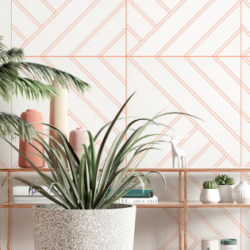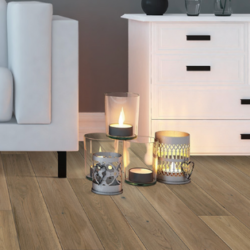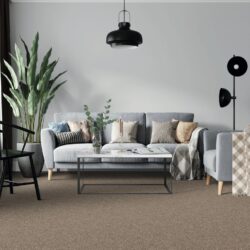Once relegated to such applications as hospital hallways and school corridors, VCT or vinyl composition flooring has made the jump from industrial to residential with relative ease. However, there is a lot not to like about VCT, which should have consumers thinking twice before deciding to lay it down.
It’s Expensive
Touted as a cheap option for those on a budget, VCT requires a heavy dose of wax at the outset, and continual maintenance every six months or so. This not only eats into any cost savings, but it can also actually make the entire material cost more than many other comparable resilient flooring products.
It’s a Pain to Maintain
Aside from the cost, the physical labor involved in maintaining VCT can be intensive. Clearing the room, stripping and recoating the wax and waiting out the cure time can be a pain, and is easily avoided by choosing a flooring option with less maintenance, such as luxury vinyl tile.
It’s Brittle
As one of the main ingredients in VCT is limestone, it has a high potential to crack. Installing it in cold climates, or over unleveled subfloors will cause cracks, and even a small particle trapped underneath the tile during installation can cause cracks over time.
A Lower PSI Rating
Cracks and dents are always a concern when it comes to VCT, and it’s usually due to a lower PSI rating of around 125. Our Lifestyles 20 LVT plank, on the other hand, sits at 1,000 PSI, making it much more resistant to this kind of damage.
It’s Slippery
Many VCT styles are flat, which may give a sleek, shiny look to a floor, but are a hazard when wet. Opting for a flooring option with texture will not only increase style but will boost the safety factor.
It Absorbs Liquid
The main components of VCT are clay based, making unmaintained tiles very absorbent. Use in a wet location, or a flood can lift the corners of the tiles, leaving an unsightly mess that is expensive to remedy. Even rubber flooring alternatives can provide the same look with much better spill protection
VCT Warranty Is Only 5yrs
At some point, it always seems to come around to warranty. You want to know that your tiles are covered in the case of any damage, and standard VCT tiles come with just a 5-year warranty, compared to a 10-year warranty on any of the Trinity Surfaces LVT Lifestyles Collection products.
It’s Cold Underfoot
As it is thin and hard, VCT is cold underfoot, making it an incompatible choice for many residential applications. Layered luxury vinyl is made to mimic the natural effects of many other surfaces, including wood, which includes the warmth found in those options.
It’s Design Shy
The standard format for VCT is 12×12 printed tile. Aside from the uninspiring design, VCT patterns while colorful, lack the unique and raw features found in natural products, or other resilient flooring options.
There are Better Options
Once the overall cost of VCT is considered, including maintenance, there countless other resilient flooring options that are economical, environmentally friendly and able to provide the convincing look and feel of tile and wood at a fraction of the price.
There will always be certain commercial applications, which will benefit from the selection of VCT, such as organizations with dedicated staff to maintain and preserve an existing floor. However, when choosing new, consumers are well advised to consider new options that meet their needs at a far better cost to maintenance ratio.
Like what you see? Download on our Trinity Surfaces, LVT Lifestyles Collection Brochure. Connect and continue the conversation with us on social media, like us on Facebook, follow us on Twitter, Instagram and Pinterest!
This post was written by David Insogna







